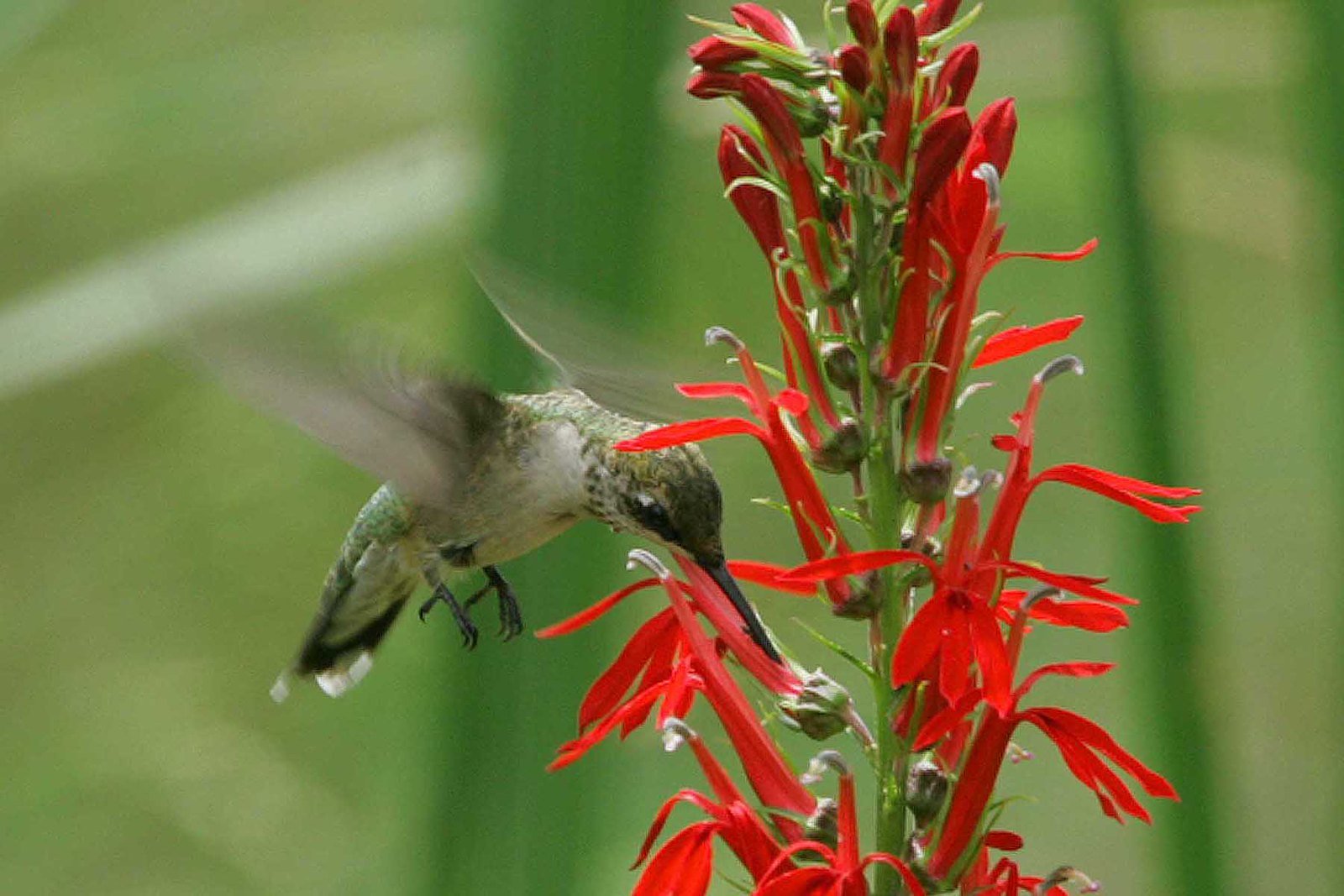A Haven for Hummingbirds
As we move into late spring,
we welcome the return of hummingbirds. Of the more than 300 species of hummingbirds, it is the ruby throated one that visits our gardens. They typically travel non-stop from their wintering grounds in Mexico and Central America to delight us with their presence through the fall. These small creatures weigh as much as a one-cent piece, but they are no light weights. They aggressively defend their territories from much larger birds and flap their wings faster than any other bird (up to 70 times a second!). Additionally, they can fly up to 30mph, backwards and upside down!
It thus takes a lot of energy to be a hummingbird. If you want to encourage these amazing birds to flit into your garden for food, landscape with plants that have brightly colored, tubular-shaped flowers. The ruby throated hummingbird is especially attracted to red. Native plants such as cardinal flower (Lobelia cardinalis), foxglove beardtongue (Penstemon digitalis), Eastern red columbine (Aquilegia canadensis), Halberd-leaved rose mallow (Hibiscus laevis) and butterfly weed (Asclepias tuberosa) are good choices.
If planting is not in your cards this season, you can also put out artificial nectar (a sugar and water solution with no red dye). The Audubon Society provides further information on how to make the nectar and how often to change it during the hotter months. For those who want to support nesting mothers and their broods, avoid spraying insecticides. As with all birds, hummingbird chicks need a diet high in protein to develop. Gardens devoid of insects and spiders are food deserts for mothers and their chicks.
So let’s strum up some of the hummingbirds’ energy and make our gardens more friendly to these fast fliers and others, too!
Resources:
National Audubon Society : https://www.audubon.org/content/how-create-hummingbird-friendly-yard
2021 Hummingbird Migration Map: https://www.google.com/maps/d/viewer?mid=1y1F4lwzkP1LBwxCKTnmIC2nBNUcv-wg-&usp=sharing
The Cornell Lab of Ornithology: https://www.allaboutbirds.org/guide/Ruby-throated_Hummingbird/overview
(Also consider purchasing an “ant guard” or “nectar protector” if you put up a feeder)

